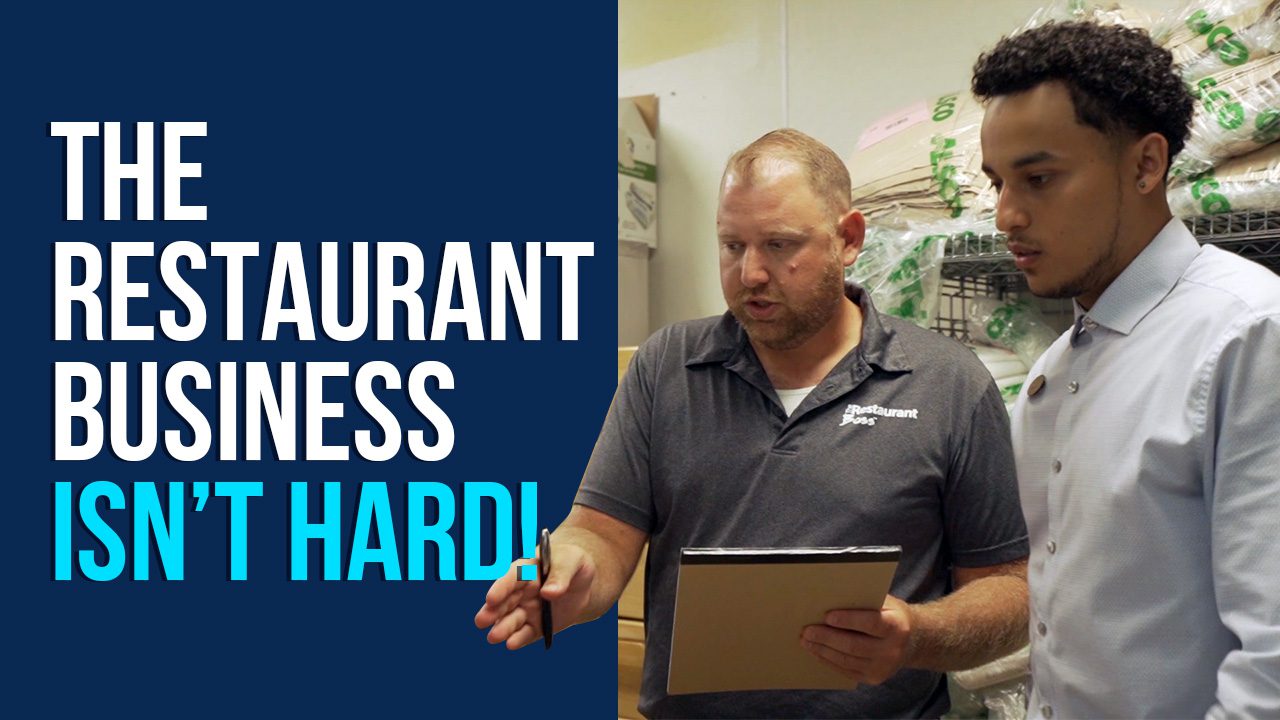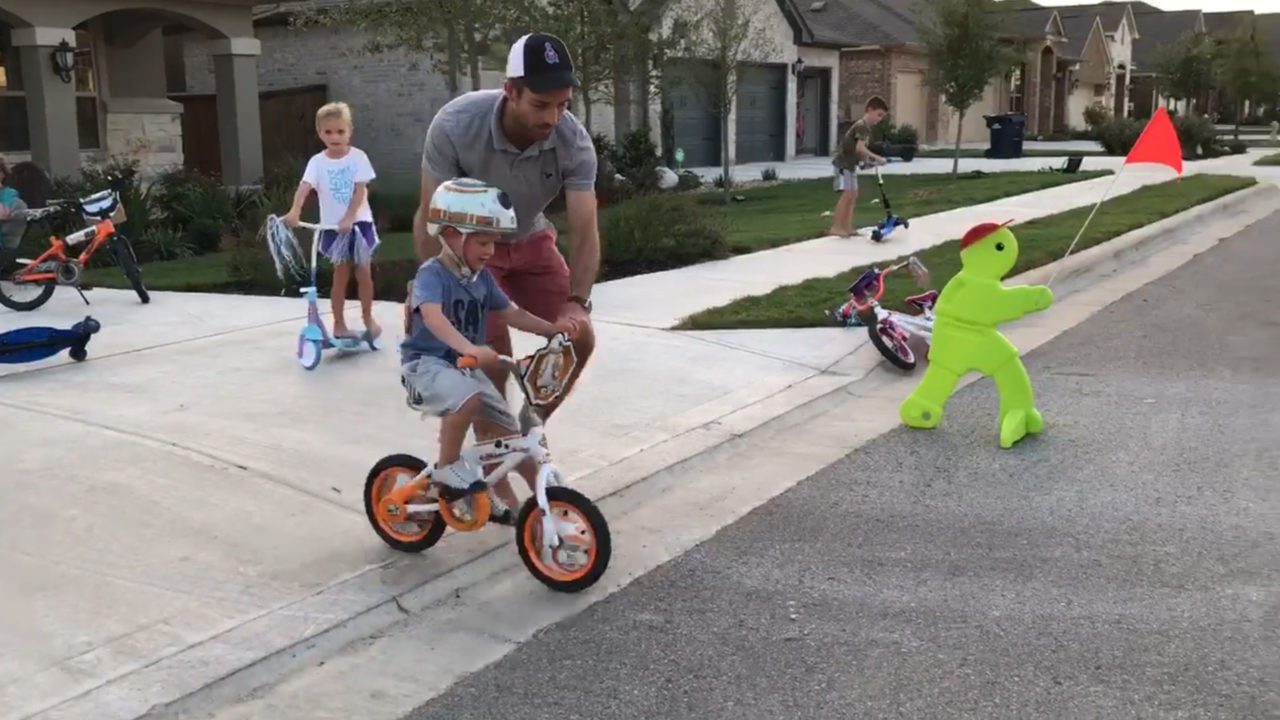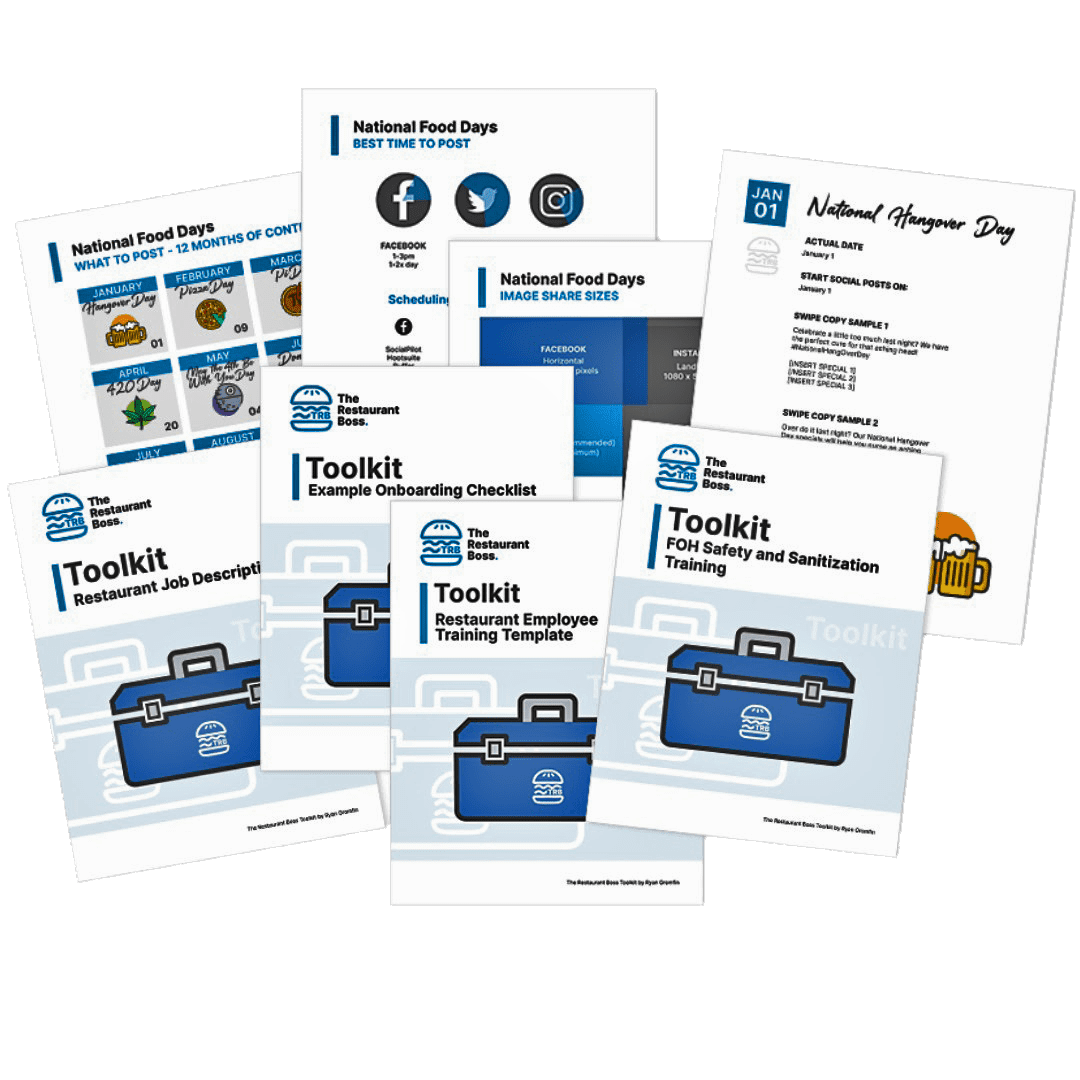
That’s not quite true – the restaurant business is not any harder than any other business or career that you want to be highly successful at.
Things that ARE actually hard:
1. Performing brain surgery while the patient is still alive.
2. Calculating a launch window for a rocket that goes into orbit and releases a GPS satellite so your phone can give you turn-by-turn directions to grandma’s house.
There are some crazy statistics that say between 80-95% of all restaurants close in their first year. I don’t know what that number really is but the hard truth is that some restaurants close, some succeed and some just chug along.
You would agree that cooking burgers and fries is really not that hard. Then where does the idea that this industry is hard actually come from?
I, too, used to believe it was hard until I figured out the “secret.” I’ve operated 4 restaurants of my own, worked in a handful of others, and consulted with 100s of clients all over the world. Here’s the secret: running a restaurant isn’t hard — what makes it hard is doing the 100 or even 1,000 easy things the right way, every day. That’s what makes it feel hard.
This isn’t my personal revelation. Achieving high levels of success at anything is hard. Smarter people than me have done a lot of research into high-performance and have proven that there are a few basics that we simply must master to succeed at anything.
So, is the restaurant business harder than anything else? I don’t think so.
How to make hard things easy
There’s plenty of things that used to be hard for us that we now find easy. For example, riding a bike. When you were in the learning phase, it was hard to master the skill. But now you’d never consider it difficult — you just get on your bike and ride

Have you ever stopped to think about what actually happens when something that used to be hard becomes easy?
I’m going to show you exactly what happens so you’ll be able to dramatically ease your restaurant operations and, dare I say (gasp!), stop telling yourself and everyone else how hard the restaurant business is.
Identify the real challenge
How do we trick the mind?
If we know the restaurant business isn’t inherently hard and it’s doing the hundreds of easy things in a very certain way that’s hard, the next step is identifying what those easy things actually are.
These are called sub-skills.
When I’m asked on a coaching call how to improve customer service, I always respond (BTW my clients HATE this) with a question, “What is great customer service?”
So let’s do it together. Please pause for a moment here and write down 4-5 things that you commonly associate with great customer service. What is great customer service?
• Treating the guests kindly
• Greeting them politely
• Being attentive to their needs
• Making sure they have what they need at all times
• What else, this is your list, not mine…
To have “better customer service” you have to improve all those things you just wrote down. They’re all sub-skills. There’s no single factor that delivers you better customer service.
You can’t teach “customer service” and you certainly can’t buy it at the store. BUT you can teach your team the proper execution of the 30 different steps of customer service. Practicing and mastering those 30 steps—THAT’S what will get you “better customer service!”
All hard skills are only hard because they are made up of a lot of sub-skills. Talking is not hard, walking is not hard, it’s only hard when you try to do them at the same time.
Having your friends over for a dinner party isn’t hard. What makes it hard is all of the planning, shopping, cleaning, preparation, timing and culinary talent that makes it hard!
Here are 3 quick steps for making a hard skill easier:
1. Identify what you want to improve.
2. List out the different sub-skills.
3. Practice those sub-skills in isolation from each other.
Following these exact steps will prevent you from feeling overwhelmed because not only do you have a real plan for improvement, you will only work on 1 skill at a time versus 30 different skills all at once.
Because practicing one sub-skill at a time is not as scary or intimidating, you’ll approach it with a positive mindset and spend more time focusing on it and practicing it.
#SarcasmAlert: through some crazy magic, the more you practice something, the better you’ll get at it.
Being good at something is a consequence of practicing it. The hardest part of this is practicing the right things often enough.
Chunk it down
Greeting a guest is not hard and because of this perception, most restaurants don’t spend much time training a new employee how to do it. But it’s only easy if you have a properly written script for your host, you train them how to properly deliver the script, mark off this step on your new hire training checklist (ohh, you don’t have that), and completed enough role-playing exercises with them to ensure they’ve mastered the skill and won’t stand in front of a guest on Friday night with a blank look on their face.
Feeling overwhelm creep in yet?
That’s because I took something that seems easy and made it hard by telling you all of the things that you have to do and have to do well.
Time to make it easy for you again…
Training is really just a simple 5-step process. Using guest greeting as an example, it’s a single page document that has a brief explanation of why greeting the guest properly is important, the script you want the host to use, and signatures of the trainer and the trainee. The signatures are only added when you have demonstrated this skill, the employee has practiced it, and they have, in return, demonstrated the skill to the trainer.
You can create this document in about 15 minutes.
Or just download our free toolkit that contains an example for you to copy in about 30 seconds.
The 5-step process for training ANYTHING is as follows:
1. Why Do
2. How Do
3. I Do
4. We Do
5. You Do
Once you complete your first training document, it’s time to replicate the process for the other tasks your host needs to know: how to estimate wait times, how to walk guests to their table, how to inform guests their table is taking a bit longer than you originally estimated, etc.
If you don’t have a host, think about another position in your restaurant, like a cashier.
It’s still too hard
Even with new techniques and the understanding of how to make hard things easy, a lot of people will still say it is hard. But why?
Denial
You’re still going to have to do the work. If you think things should just be done for you or that you’ll walk around your restaurant all day thinking about all the hard things that have to be done and finding excuses not to do them, then this is always going to be hard for you.
I’m not selling easy. I’m just giving you the easier path to achieving the results you want. But you still have to do the work.
DEAL WITH IT. #SorryNotSorry
Nothing ever happens fast enough
We all want results yesterday. Actually, I take that back because yesterday is too late. We all want results a few years ago. We lament about how we should have done this or done that.
“Stop shoulding all over yourself.” – Tony Robbins
You can’t change the past. You are where you are. So, right now is the perfect time to fix something in your restaurant and make it better. Sure, yesterday would have been good but you didn’t do it yesterday so you might as well start today.
“The best time to plant a fruit tree was before you are hungry, the second best time is now.”
A word of advice: it’s going to take you much longer than you think it will so any time you spend thinking about how you wished you had started things sooner is just wasting more precious time.
If you want to move faster, here are some proven ways to accomplish it.
Leverage (what’s the biggest lever you can pull)
Did you know that a single domino can knock over another domino that’s 50% larger in size and weight? That means a standard 2” domino can knock over a 3” domino which can knock over a 4.5” domino. By the time you get to the 8th domino, it can knock over an average sized person. The 17th domino? It can topple something larger than the Eifel Tower!
And the 75th domino can topple something that stretches from the Earth to the moon. Wow!
The average set of dominos on Amazon has 100 dominos in it. Can you even begin to imagine what you could leverage that set to do? Pretty much anything you wanted – provided you knew where to place that very first domino.
Far too often, restaurant owners and managers try to fix the symptom and not the disease. It’s not their fault – they see an issue showing up in the restaurant and set out to try to fix it.
If you put cream on your dry elbows the dryness goes away. As soon as you stop putting the cream on them, the problem tends to come back. It’s because you fixed the symptom (the dryness) but not the underlying issue of why it’s happening in the first place.
Let’s say you have a chef that shows up late. He slept in because he was out too late the night before. You talk with the chef about the tardiness (the symptom) and for a few days he shows up on time (maybe).
Then he starts coming in late again because you didn’t fix the underlying issue. In reality, he doesn’t value showing up on time nearly as much as he does going out with his friends the night before. It’s your job to help him understand why being on time is important to them and how it will increase their ability to earn money, make their shift smoother, improve the service your guests receive, and how all of these things impact the amount of money the chef makes and the quality of their lives NOT YOURS.
You’re not the first restaurant to experience this problem and you won’t be the last.
I have a client that was having similar issues and he created a system that rewards time and attendance. He has a tip pool that is distributed weekly. The percentage earned is not only based on position in the company but also on performance factors. For example, if the chef shows up late, their percentage of tips for that week is impacted.
No matter what path you take, you MUST look past the symptom to find the root cause, the disease, the first domino and fix THAT. If you only fix what’s on the surface, you’re going to exhaust your efforts and never achieve the results you want.
Perspective
I never fully understood the expression when somebody can’t see the forest for the trees. It sounds weird and didn’t really make sense to me until I started using it in my coaching.
It happens when somebody is SO caught up in the details that they lose sight of the big picture. All they see are trees.
CLIENT EXAMPLE #1
I’ve been working with a particular client for 4 years. He’s a great guy and has VERY successful restaurants that have grown dramatically over the time we’ve worked together — yet, he is stuck. He is stuck in the details and spends his days looking at financials — he always wants more data.
He’s been building a dashboard with a consultant for THREE YEARS and it’s still not finished. It always needs just a little more information to get what he wants. Meanwhile, it’s obvious from the outside what his challenges are and how to fix them. He just can’t see the forest for all the trees.
We know his food cost is a bit high. But we don’t know exactly how high because in 3 years, we’ve never been able to get an accurate number from the dashboard. All we know is that when you look at purchases over sales, the number is a bit high. We know there’s a lot of waste, spoilage, and over portioning because we’ve talked to the managers, looked at trash cans, and compared what is ordered to what is sold.
He just won’t put the systems in place to fix anything until he has an exact food cost. So, he invested in a full inventory system. I warned him this would take more work from his team and would take much longer than he expected. He didn’t listen. Eight months into the project and we don’t even have 10 recipes entered correctly because of all the work it takes to get the kitchen to provide accurate recipes to be entered into the system. Don’t even get me started on the integrations with purchasing and pricing changes!
All that time, money, and effort have been invested and we’re still in the same spot: the food cost is still a bit high. He’d be much further ahead if he had just started working on fixing the things we knew needed attention.
CLIENT EXAMPLE #2
Another client of mine cares about food cost just as much as Client 1 but doesn’t get caught up in the details. In 30 minutes or so, they set up our very simple software, clickBACON, that gives him a very accurate dashboard of the most important data a restaurant needs to operate and nothing more.
In the same 4 years, this brand has opened 10 locations and keeps their food cost right where it needs to be.
They spend every free second training their team and developing new methods for exceeding their guests’ expectations rather than counting stuff on shelves or working with software consultants to build perfect dashboards that are never finished.
Sometimes you need to take a few steps back from your hard situation and look for the easiest way to fix it.
Occam’s Razor is a problem-solving principle arguing that simplicity is better than complexity. Named after 14th-century logician and theologian William of Ockham, this theory has been helping many great thinkers for centuries. Many industries swear by it and so do I.
Occam’s Razor, put simply, states: “the simplest solution is almost always the best.”
Brendon Burchard says, “Progress before Perfection.”
I say, “Make it Happen.”
Whatever you choose to say or believe, if you’re not getting the results you want, as fast as you want, your first step must be simplifying your process.
Shortcuts
I’m a little embarrassed to tell this story but here goes…. I used to want to punch my chefs in the face when they would push a dish back in the window and tell me, “If you have time to do it twice, you have time to do it nice.”
It made my blood boil but you know what, they were right.
I was in a hurry with a ton of tickets piling up, so I admit to making the dish a bit sloppy. The problem is now I had to make this dish a second time. If I had just made it properly the first time, even if it took a few extra seconds, it would have been faster and less stressful for me.
I tried to cut corners to get through the ticket faster because I didn’t feel like I had enough time to make it the right way in the first place. If I didn’t have time to make it right the first time, what made me think I’d have enough time to make it twice?! That’s actually easy to answer, I thought I would get away with it.
How many chefs have you been through versus taking your time and hiring the right chef the first time?
How many cashiers have forgotten to get extra printer paper before their shift started and then had to go get it when they are slammed?
How many times has someone on your team had to run to the store to buy something they forgot to order instead of placing the order correctly the first time?
How many more times are these things going to happen before you put a system in place to fix it once and for all and never have to worry about it again?
If I had to guess, you’d say that you don’t have the time to build that system because you’re too busy running to the store, cooking for the chef that just quit, or running to get that printer paper in the middle of service.
What else are you too busy to do?
If you’re too busy to create a properly formatted order guide that prevents missing items from orders, you’re definitely too busy to make any mistakes because you’ll never have the time to fix them.
The biggest shortcut you will ever take to your success is not a shortcut at all — it’s just doing it right the first time. Who has time for trial and error or who has time to figure it out as you go?
You don’t have time or money to test different types of marketing — you need your marketing to work the first time.
If you are going to build an order guide, you need it done right the first time.
If you have tried checklists in the past and think they don’t work, perhaps it’s because they weren’t built right or you didn’t train your team how to properly use them….
Birds of a Feather
Another proven way to make hard things easy so you can achieve results at the pace you desire is to find people who have achieved what you want to achieve or who have helped others achieve what you want — and just do what they say.
In other words, find yourself some coaches and mentors to help you out.
We don’t know what we don’t know. Sometimes we think we’re doing something right but we don’t really know.
Just because you don’t know where to place your first domino that’s going to start knocking down all of the dominoes in your business doesn’t mean that NO ONE knows. Someone who works with hundreds of other restaurants and coaches them professionally likely does.
When you don’t know what the simplest solution to your complex problem is or how to chunk it down into sub-skills, find the person who’s worked with hundreds of restaurants and has seen almost every scenario possible – they will know.
If you don’t know if your checklists, order guides, or training methods are correct, find the person who’s professionally coached hundreds of other restaurants to help you perfect them.
Why would you work harder than you have to and why would allow success to take longer than it needs to?
If you’re thinking of opening a restaurant in the next 6 to 12 months and want to make sure you’re truly ready to hit the ground running. Or if you already have one open but are frustrated, overworked, overwhelmed, stressed out and tired of the struggle. Or if you have a restaurant that’s working well but want to open more locations and are worried that you’re going to mess it up…. My first question is: why aren’t you working with a coach or gaining knowledge through courses that are specifically geared toward the restaurant industry and designed to alleviate all of these questions and problems?
If you’re interested in learning more about our Membership Program, please click here.
Your time is money and your money is time.
The restaurant industry is hard only if you do it the hard way, but it can be easy and enjoyable if are open to getting some help and learning how to do it the right way.


